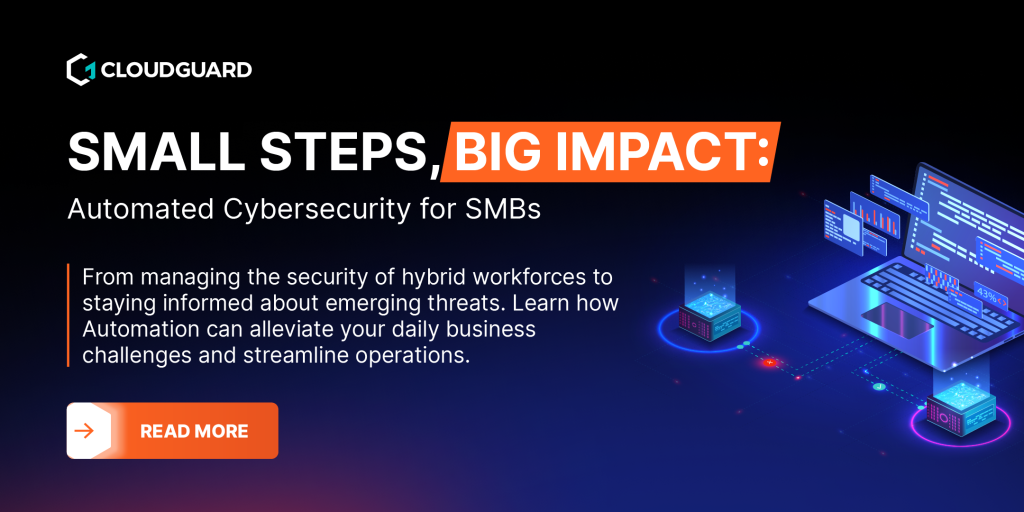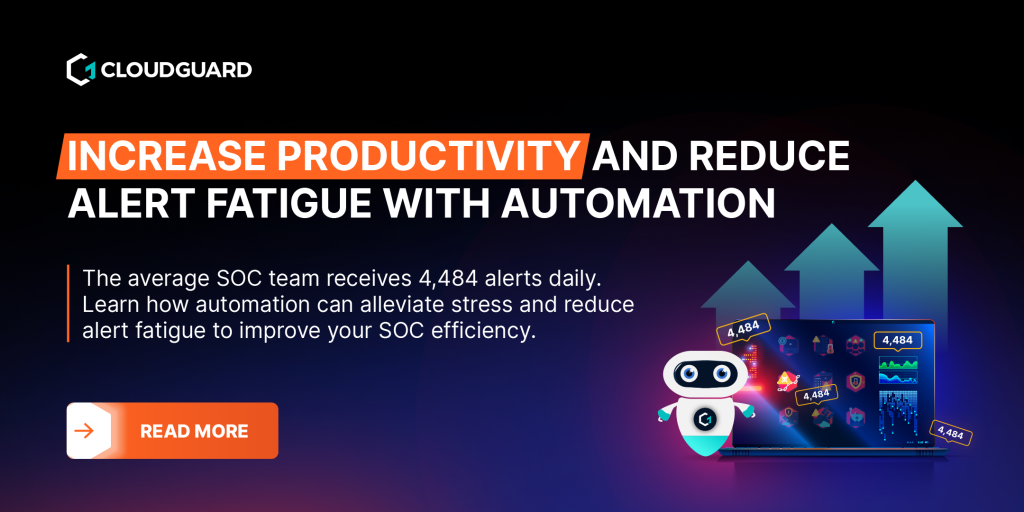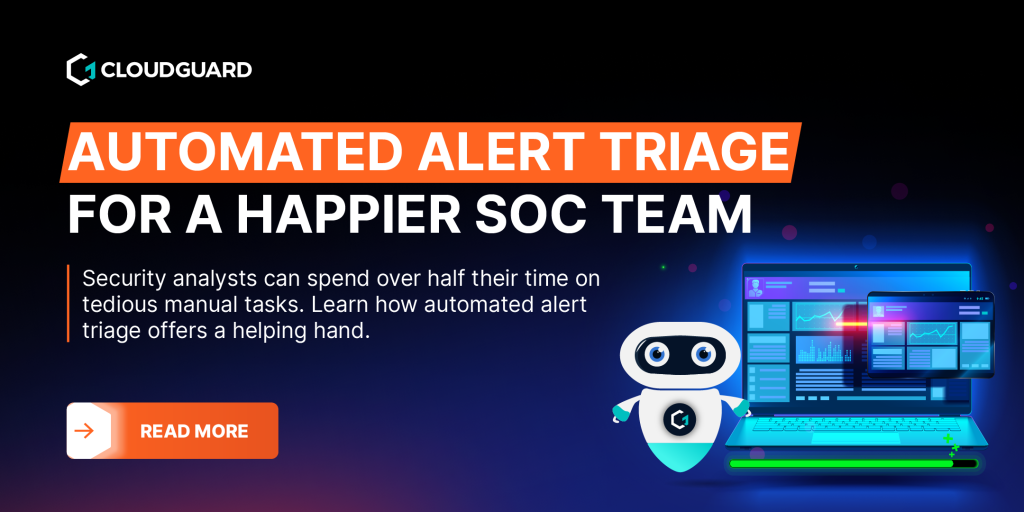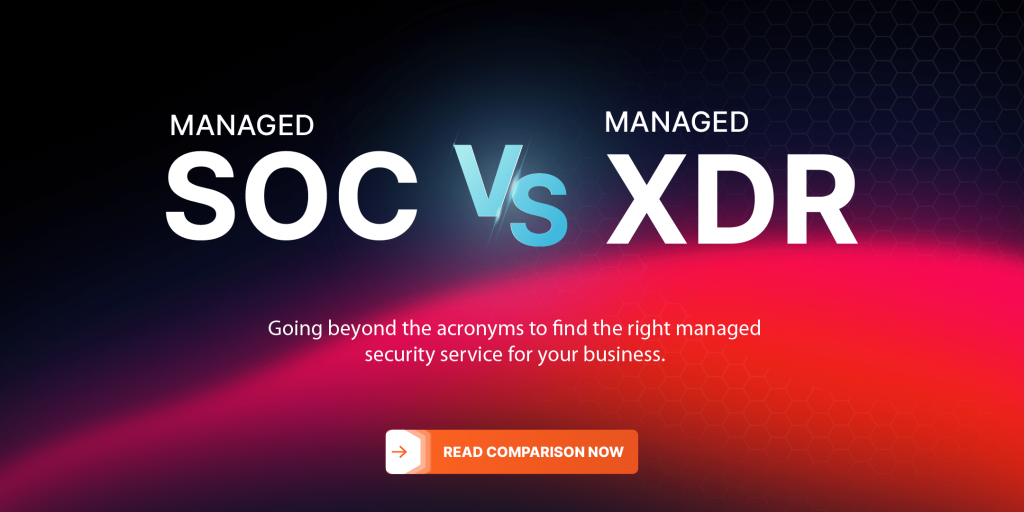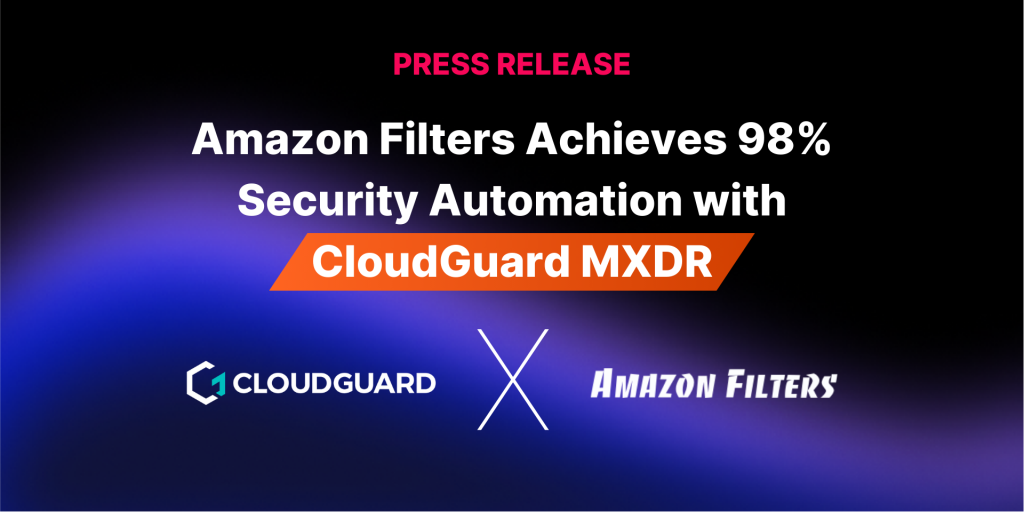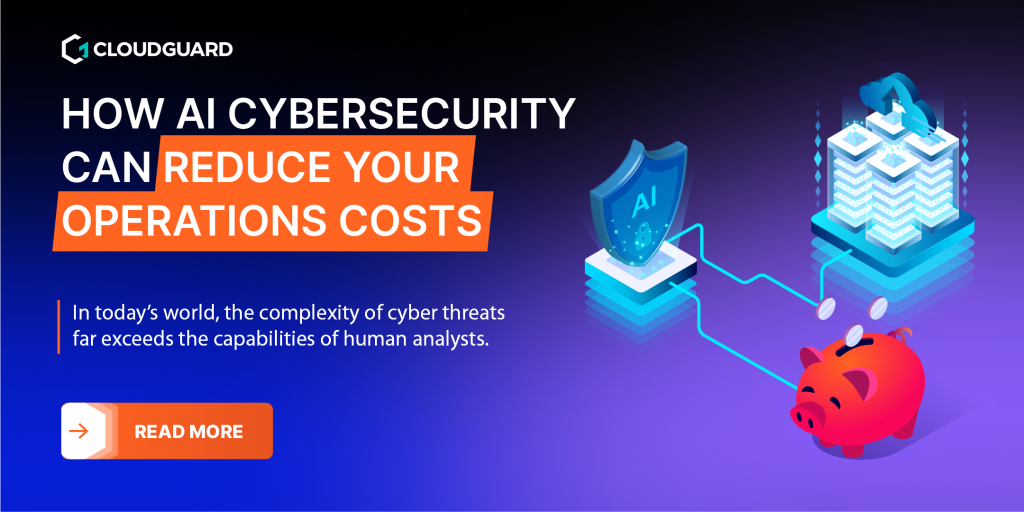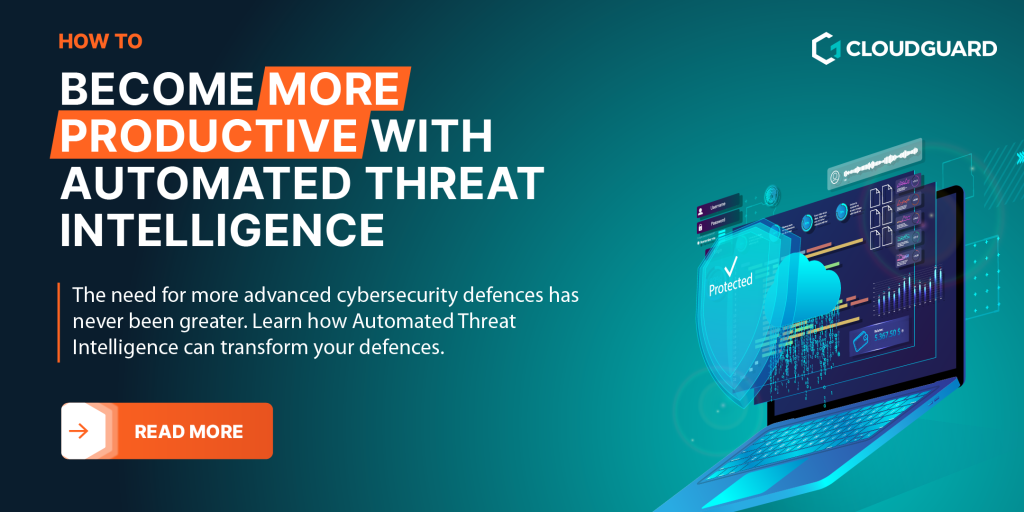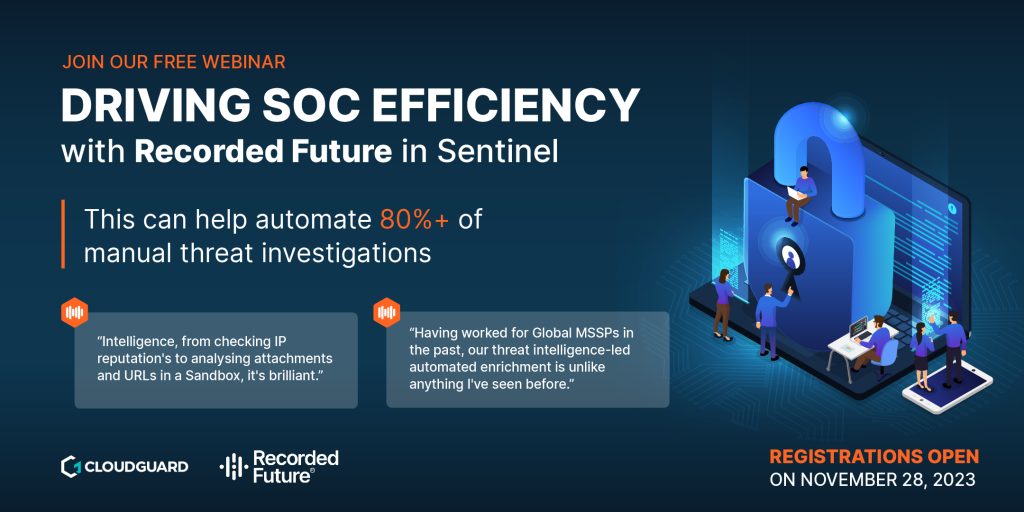Cybersecurity Automation 101: Everything You Need to Know
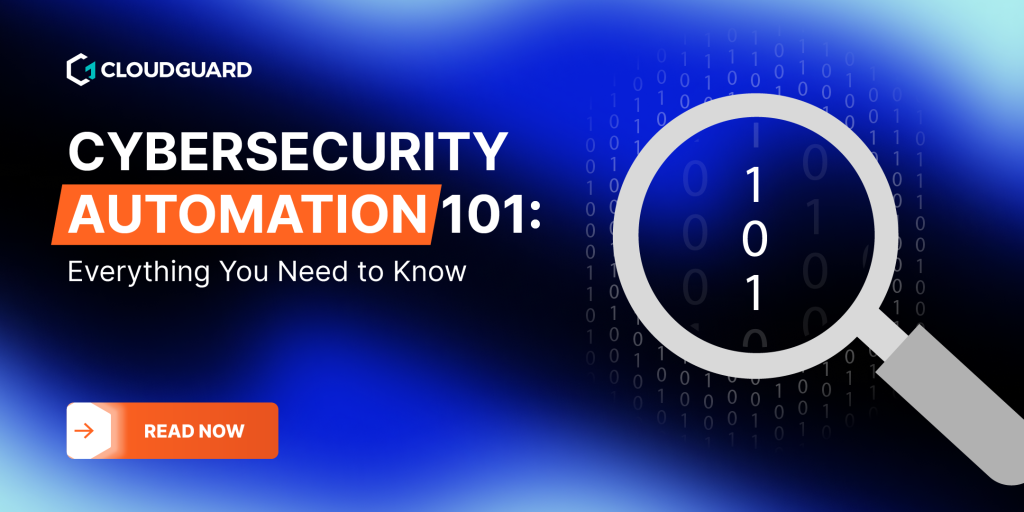
Introduction to Cybersecurity Automation
The need for cybersecurity has never been more critical as the UK government reports that a staggering 2.39 million cases of cyber-crimes affected UK businesses over the past 12 months alone1.
The problem is that traditional cybersecurity solutions struggle to cope with the rapid rise of complex security threats. Financial pressures and talent shortages mean businesses are struggling to scale their security teams. This lowers their ability and capacity to identify threats, handle alerts effectively, and minimise the impact of attacks.
That’s why businesses are now looking for more efficient, cost-effective ways to improve their security posture and protect their sensitive data from malicious actors. And that’s where cybersecurity automation enters the chat.
Cybersecurity automation uses advanced technologies and processes to streamline security operations, improve threat detection, and drastically reduce incident response times. By automating repetitive tasks steered by artificial intelligence and machine learning algorithms, security teams can achieve greater efficiency, accuracy, and scalability in their cybersecurity efforts.
Here, we’ll explore the world of cybersecurity automation and how it can significantly improve protection for your business. From the principles of automation to the implementation of solutions such as Security Information and Event Management (SIEM), Security Orchestration, Automation, and Response (SOAR), and Extended Detection and Response (XDR), we will provide you with insights, best practices, and real-world examples to help you benefit from cybersecurity automation.
By the end of this guide, you will understand the impact of cybersecurity automation and learn how it can help your business to stay one step ahead of cyber threats in 2024 and beyond.
What is Cybersecurity Automation?
Cybersecurity automation is the automatic detection, analysis, and remediation of cyberthreats, either with or without human intervention, through a series of predefined rules and scripts. This process involves detecting security risks, categorising and prioritising them, and responding accordingly. It plays a vital role in managing the multitude of alerts flooding your security team daily.
In relation to Security Operations Centres (SOCs), automated cybersecurity assumes much of the routine tasks assigned to Security Analysts. This not only improves the speed and accuracy of threat detection, investigation, and response but also frees your analysts from the burden of manual alert handling, allowing them to focus on more strategic security tasks – and more importantly, new threats.
Key features of security automation
- Identifying threats within an organisation’s environment
- Enhancing, correlating, grouping, and prioritising alerts to accelerate investigations
- Applying predefined measures to contain and rectify issues
Cybersecurity automation tools carry out these functions quickly, often without requiring direct involvement from your security team. Relieving them of repetitive, manual, and time-consuming tasks, automated systems boost overall efficiency.
Automated systems also make threat detection faster, addressing the issue of “alert fatigue” experienced by analysts overwhelmed with security alerts. Research by IDC2 indicates that companies, regardless of size, overlook a significant amount of security alerts and spend considerable time investigating false positives.
A solution that automatically filters out false positives, enriches alerts with threat intelligence, consolidates related alerts, and triages them based on organisational risk can significantly improve issue identification before things escalate. Automation helps your analysts to make fewer errors and relieves the sense of being overwhelmed through the mitigation of alert fatigue and reduction of manual processes.
Do You Even Need Cybersecurity Automation?
How can you tell if your business needs security automation? There are several telltale signs that mean it’s time to adopt, expand, or improve your security automation measures.
For many organisations, unfortunately, the wake-up call often comes in the form of a security breach. While some breaches are minor and easily remedied, others can have devastating consequences. According to the IBM Cost of a Data Breach Report3, the average total cost of a data breach was £4.35 million in 2022. For organisations of any size or financial standing, a single cyberattack could spell disaster.
Monitoring incident response times is another way to gauge the effectiveness of your cybersecurity measures. If the mean-time-to-detect and mean-time-to-remediate incidents are increasing, it’s a clear signal that your current security infrastructure needs improvement.
Another red flag is if your security team is bogged down with false positives and suffering from alert fatigue. These alerts, which turn out to be harmless upon investigation, can overwhelm analysts and divert valuable resources away from genuine threats. If your team spends critical time chasing down false positives, it’s a strong indication that security automation could greatly benefit your business.
Your security team’s firsthand experience is perhaps the most reliable gauge of whether security automation is needed. They can identify if they’re suffering from alert fatigue, spending excessive time on false positives, and whether they have the necessary resources to effectively tackle emerging threats. Listening to their insights can provide invaluable guidance in determining the necessity of security automation.
The 4 Pillars of Automating Cybersecurity
 So, where do you begin to automate cybersecurity? We believe there are four core areas where cybersecurity automation can help your business: automated threat detection, automated threat analysis, automated threat response, and automated protection. Let’s break these down in more detail.
So, where do you begin to automate cybersecurity? We believe there are four core areas where cybersecurity automation can help your business: automated threat detection, automated threat analysis, automated threat response, and automated protection. Let’s break these down in more detail.
Automated Threat Detection
Automated Threat Detection starts with a series of tools and techniques to identify and mitigate cyber threats quickly. Among these tools are Security Information and Event Management (SIEM) solutions such as Microsoft Sentinel, machine learning algorithms, and behavioural analytics.
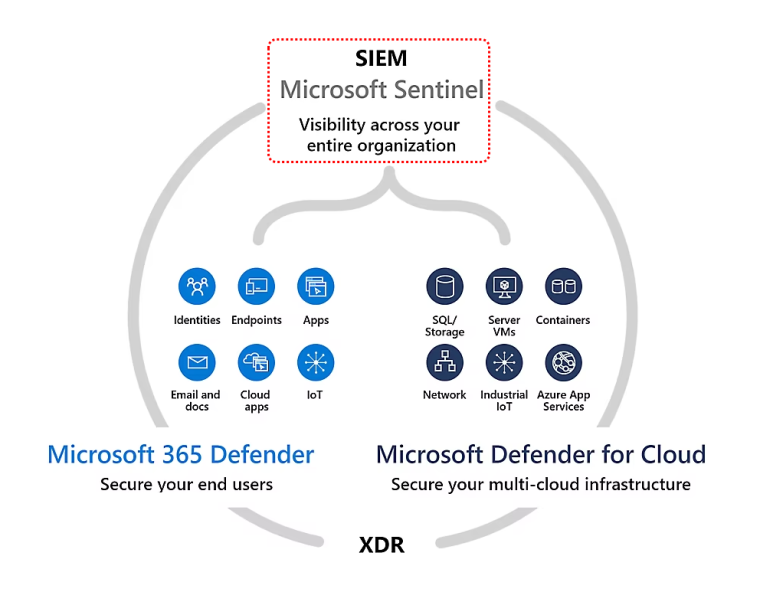
SIEM solutions are at the core of many business’ security operations, aggregating and analysing vast amounts of security data from various sources to detect anomalies and potential threats. Through correlation and pattern recognition, SIEM platforms can pinpoint suspicious activities within your environment that might be the start of an ongoing cyberattack.
Machine learning algorithms aid automated threat detection by analysing large datasets to identify patterns and anomalies indicative of potential security breaches. These algorithms continuously learn from your security data, improving their accuracy and effectiveness over time without human intervention.
Behavioural analytics focuses on understanding typical user behaviour within your business’ network. Establishing baselines of normal behaviour ensures behavioural analytics solutions can flag activities that may signify unauthorised access or malicious activity.
In the development of automation scripts and processes for automated threat detection, your Security Analysts play a pivotal role. Their insights into common attack vectors, threat actor tactics, and organisational vulnerabilities can lead the creation of automation scripts tailored to the specific needs of your organisation. Working with your analysts and automation engineers can ensure that detection rules and processes align closely with your organisation’s security objectives and risk tolerance.
The challenge is that deploying and managing hundreds of detection rules requires careful planning and execution. Best practices include:
- Building modular automation scripts that can be easily updated and adapted to evolving threats and organisational requirements. Modular scripts enable scalability and flexibility, allowing for the seamless integration of new detection rules and updates.
- Implementing automated processes for updating detection rules ensures that security controls remain effective against emerging threats. Regular updates should be scheduled to incorporate the latest threat intelligence and software patches.
- Establishing procedures for managing and maintaining detection rules, including periodic reviews to assess their relevance and effectiveness. Removing outdated or redundant rules helps streamline operations and improve detection accuracy.
- Implementing version control systems to track changes to detection rules and ensure consistency across the environment. Version control promotes collaboration among security teams and provides a historical record of rule modifications.
Sticking to these best practices and leaning on the expertise of your Security Analysts will allow you to develop robust automation strategies for threat detection and response.
Automated Threat Analysis
Automated Threat Analysis changes your approach to security incidents, transforming the role of security analysts and streamlining investigation and triage processes. With the integration of automated threat intelligence, your alerts are enriched, reducing the analysis time from hours to seconds. This automation tackles issues of alert fatigue and false positives head-on, ensuring that every alert receives thorough scrutiny.
One of the key advantages of automation in threat analysis is its ability to conduct full investigations quickly and consistently, faster than any human analyst. While you may become overwhelmed by the volume of alerts, automation rapidly performs comprehensive investigations without hesitation or fatigue.
When crafting scripts for automated threat analysis, it’s crucial to adhere to best practices:
- Breaking down automation tasks into modular components, such as data enrichment or incident response actions, to create reusable modules that accelerate script development and deployment.
- Simplifying the process of updating or modifying scripts by ensuring changes to one module can be seamlessly integrated without disrupting the functionality of other components.
- Implementing changes across all relevant automation modules swiftly, ensuring consistency and minimising downtime. For instance, updating the method of adding comments to a ticketing platform should be seamless across all modules.
Even if a script does exist for a particular alert, you can still deploy elements such as automated threat intelligence to speed up the analysis time required your analysts to understand a new threat. Continuously enriching your automated processes with the latest threat intelligence will ensure that your detection and response capabilities remain agile against emerging threats.
Automated Incident Response
Automated Incident Response accelerates your ability to address security incidents , streamlining response workflows and minimising the impact of threats. Central to this capability are Security Orchestration, Automation, and Response (SOAR) solutions, which orchestrate and automate incident response workflows to ensure rapid and coordinated actions.
Automation plays a vital role in reducing incident response times by completing predefined actions based on predefined triggers or conditions. This includes tasks such as isolating compromised systems, blocking malicious IP addresses, or quarantining suspicious files. Through automating these response actions, you can significantly reduce Mean Time to Resolve (MTTR), limiting the potential damage caused by security incidents.
Demonstration of automated threat response in action at CloudGuard
When it comes to creating scripts for automated incident response, it’s essential to consider the various triggers and conditions that warrant a response. These triggers could range from the detection of specific indicators of compromise (IOCs) to unusual user behaviour or unauthorised access attempts. Identifying these triggers and mapping out response actions in advance will ensure a swift and coordinated response to security incidents.
Automated responses also remove blockers related to staff training and access rights, as it eliminates the need for human intervention in executing response actions. Once the script is accurately configured, automation ensures consistent and reliable responses without the risk of human error.
Additionally, automation fills incident response processes with the knowledge required to address specific threats. By providing automation with insights into your business’ security posture, threat landscape, and response protocols, you help it to respond automatically to emerging threats with precision.
Deploying automated incident response, and adopting best practices in script development, improves your team’s ability to detect, respond to, and mitigate security incidents, improving your overall cybersecurity posture.
Key aspects of automated incident response include:
- Automating response actions based on predefined triggers or conditions to facilitate rapid incident resolution.
- Identifying triggers such as indicators of compromise (IOCs) or unusual user behaviour to initiate automated response workflows.
- Eliminating the need for human intervention in executing response actions, reducing reliance on specific skill sets and access permissions.
- Providing automation with insights into your organisation’s security posture, threat landscape, and response protocols to enable accurate and agile responses to emerging threats.
Automated Protection
Now we’re going to discuss automated protection, and yes, it is different from automated security. Automated protection complements your automated security by focusing on proactive measures to prevent security breaches and mitigate vulnerabilities. While automated security primarily deals with detecting and responding to threats in your environment, automated protection aims to reinforce your systems and applications against potential exploits.
Timely patching plays a crucial role in improving your defences against known vulnerabilities. Automated patch management streamlines the process of identifying, deploying, and verifying software updates, ensuring that your systems are promptly protected against emerging threats.
Key aspects of automated protection and patch management solutions include:
- Automatically identifying and deploying software updates as soon as they become available, reducing the window of vulnerability.
- Automating scans to identify potential security weaknesses in your systems and applications, allowing for proactive remediation before exploitation occurs.
- Enforcing patching policies and compliance requirements across your organisation’s IT infrastructure, ensuring consistent protection against known vulnerabilities.
- Centrally managing patch deployment and monitoring processes, providing visibility into patching status and ensuring uniformity across diverse IT environments.
Implementing automated protection and patch management, strengthens your defences against known vulnerabilities, reducing the risk of security breaches and protecting your organisation’s assets and data.
What Automated Cybersecurity Tools are Available?
The great news is that there are already tools and solutions on the market that can give you a head start in automating cybersecurity operations in your business. We’ll cover some of them here to give you some insight into what’s available.
SIEM (Security Information and Event Management)
Microsoft Sentinel, a leading SIEM and SOAR product, is a prime example of how a SIEM solution can enable the deployment of automation within your business. Microsoft Sentinel covers log ingestion and analysis (SIEM) and focuses on automation and response to incidents (SOAR). Automation is integral to Sentinel4, helping you manage the mass of alerts generated by various security solution.
Automation Use Cases in Microsoft Sentinel:
- Create notifications for new incident information to keep SOC Analysts informed without constant manual monitoring. Notifications can be sent via Teams, email, text, or synchronised with ITSM tools.
- Automate manual processing tasks for SOC Analysts by enriching incident data. This includes assessing IP reputation, user history, device information, and vulnerability status to provide context for quicker decision-making.
- Execute predefined actions automatically, such as incident closure or user password reset, based on specific conditions. However, automated actions should be approached cautiously due to potential impacts on the environment.
Automating Microsoft Sentinel
Azure Logic Apps5 are the engine driving Microsoft Sentinel automation, allowing Security Engineers to create automation workflows without deep development knowledge. Logic Apps, referred to as “Playbooks” within Sentinel, provide low-code automation capabilities.
Automation Rules
Automation Rules serve as orchestrators for Sentinel automation, triggering Playbooks automatically based on predefined conditions. These rules can update incident attributes and execute actions, helping to streamline incident response.
- Automation Rules play a crucial role in orchestrating Sentinel automation, allowing you to define actions based on conditions.
Building Playbooks
More complex actions in Sentinel require Playbooks. Researching community resources and choosing the correct trigger are essential for effective Playbook development.
- Utilise prebuilt Playbooks from the Sentinel gallery or GitHub repository to inspire and guide your own automation use cases.
- Select appropriate triggers (entity-based, alert-based, or incident-based) based on the desired automation workflow.
Manual Playbooks
While automation is essential, there’s still a use case for manual Playbooks, especially for actions requiring specific permissions or predefined flows.
- Manual Playbooks allow scoped actions without granting overprivileged roles, ensuring security and compliance.
- Manual Playbooks are useful for actions requiring a predefined flow, such as notifying stakeholders about specific incidents.
Start Automating Microsoft Sentinel
Begin experimenting with different types of Playbooks and use available learning resources to get familiar with automation workflows in Sentinel. There’s no need to reinvent the wheel; deploy existing Playbooks and customise them to suit your organisation’s needs.
It is important to note that not every SIEM solution, like Microsoft Sentinel, includes SOAR capabilities. This limitation can mean that some SIEM solutions are unable to automate your security operations in their entirety. Many businesses also struggle to find the talent to create these Playbooks and Apps, which makes opting for managed security service provider an attractive option.
SOAR (Security Orchestration, Automation, and Response)
Standalone SOAR platforms are designed to streamline and automate security operations, coordinating complex workflows and responses to security incidents. They serve as the central nervous system of your cybersecurity infrastructure, enabling seamless integration between various security tools and processes.
At its core, SOAR allows your security teams to:
- Automate mundane and repetitive tasks, freeing up valuable time for security analysts to focus on more strategic initiatives.
- Orchestrate the flow of information and actions across various security tools, ensuring a coordinated and efficient response to security incidents.
Key Features of SOAR Solutions
One of the hallmark features of SOAR platforms is playbook automation. These playbooks consist of predefined workflows that guide the response to different types of security incidents. By automating these workflows, SOAR streamlines incident response processes and ensures consistency in actions taken.
SOAR solutions offer chunky case management capabilities, allowing your security team to track and manage security incidents from detection to resolution. Case management features provide visibility into incident status, promote collaboration among team members, and ensure adherence to established processes and timelines.
SOAR platforms can seamlessly integrate with a wide range of third-party security tools, including SIEM, endpoint detection and response (EDR), threat intelligence platforms (TIP), and more. This integration enables SOAR to utilise the capabilities of existing security investments and coordinate responses across the entire security stack.
Benefits of Implementing SOAR Solutions
- By automating repetitive tasks and orchestrating workflows, SOAR solutions significantly reduce incident response times. Your security teams can rapidly detect, triage, and mitigate security threats, minimising the impact of cyber-attacks on your organisation.
- SOAR solutions remove the strain of manual effort from your security team by automating routine tasks and processes. This not only increases operational efficiency but also reduces the risk of human error and fatigue, ensuring consistent and effective responses to security incidents.
SOAR solutions can certainly help organisations achieve a level of automated cybersecurity. By utilising automation and orchestration, SOAR platforms enable security teams to respond swiftly and effectively to evolving cyber threats. However, SOAR solutions are typically complex to integrate and do not address the overall security culture6.
XDR (Extended Detection and Response)
When it comes to cybersecurity automation, Extended Detection and Response (XDR) is a comprehensive solution that addresses the full spectrum of security operations, including detection, analysis, and response. Let’s explore how XDR combines the capabilities of SIEM and SOAR to deliver unmatched cybersecurity automation.
Definition of XDR
Extended Detection and Response (XDR) represents the evolution of traditional endpoint detection and response (EDR) solutions. Unlike traditional EDR tools that focus solely on endpoint security, XDR provides broader visibility and correlation across multiple security layers, including endpoints, networks, cloud environments, and applications. Consolidating and correlating data from various sources, XDR enables you to detect and respond to threats more effectively, regardless of their origin or attack vector.
Key Features of XDR
- Centralised visibility of security events
- Advanced threat detection
- Integration into existing environments
XDR platforms offer centralised visibility into security events and alerts across your entire IT infrastructure, providing your security team with a unified view of your security posture. This centralised visibility enables you to detect and respond to threats in real time, regardless of where they occur within your environment.
XDR solutions use advanced analytics and machine learning algorithms to detect sophisticated and evolving threats. Analysing vast amounts of telemetry data from endpoints, networks, and other sources, XDR platforms can identify malicious activities and anomalous behaviours indicative of a security threat.
XDR platforms integrate with a wide range of security tools and technologies, including SIEM, SOAR, endpoint protection platforms (EPP), and threat intelligence feeds. This integration enables you to maximise your existing security investments and improve your overall security posture through automated threat detection and response workflows.
Benefits of XDR
- Complete approach to cybersecurity automation
- Streamlined cybersecurity automations for a healthier, happier and more effective security team
- Available as a complete managed service to make deployment and implementation easier on your organisation
Combining SIEM and SOAR capabilities with extended detection capabilities, XDR provides you with a complete approach to cybersecurity automation. From detecting advanced threats to coordinating response actions, XDR enables your security team to identify and mitigate security incidents across endpoints, networks, and cloud environments.
XDR simplifies security operations by automating routine tasks and workflows, reducing the burden on your security team, and enabling them to focus on strategic initiatives. With centralised visibility and automated response capabilities, XDR helps your organisation improve incident response times and minimise the impact of cyber threats on your day-to-day operations.
As a managed service, XDR offers your business the flexibility to achieve automated cybersecurity without the need for internal resources and skills. Managed XDR providers take care of the deployment, configuration, and maintenance of the XDR platform, allowing your organisation to benefit from advanced threat detection and response capabilities without the overhead of managing the solution in-house.
Final thoughts on XDR
Extended Detection and Response represents is at the forefront of cybersecurity automation, combining SIEM/SOAR capabilities with extended detection capabilities to deliver comprehensive threat detection and response across your entire IT infrastructure. Deploying advanced analytics, integration with third-party security tools, and managed service options, XDR will allow your organisation to stay ahead of growing cyber threats with modern cybersecurity automation.
What are the Benefits of Cybersecurity Automation?
Although we’ve covered it throughout this guide, let’s summarise the key benefits of cybersecurity automation for your business.
Increased Efficiency
Cybersecurity automation enables rapid detection and response to potential threats, significantly reducing the time it takes to identify and mitigate security incidents. Automating routine tasks and workflows allows security teams to streamline their operations and focus their efforts on more strategic initiatives, improving overall efficiency.
Improved Accuracy
Automated systems possess the capability to process vast amounts of data and uncover patterns that human analysts may miss. This results in fewer false positives or negatives, as automated tools can detect subtle indicators of compromise that might go unnoticed by manual inspection. Through deploying machine learning and artificial intelligence algorithms, cybersecurity automation boosts accuracy in threat detection and response.
24/7 Monitoring
One of the most significant advantages of cybersecurity automation is its ability to provide round-the-clock monitoring of networks and systems. Automated security solutions can tirelessly scan for potential threats and anomalous activities, ensuring that your business always remains protected, even outside of regular working hours. This continuous monitoring capability helps your organisation stay one step ahead of cyber threats and mitigate risks proactively.
Scalability
Automation allows your business to scale its security operations as you grow. Whether you’re a small startup or a large enterprise, automated security solutions can adapt to the requirements of organisations of all sizes. Automating repetitive tasks and processes helps you to manage your security operations without the need for additional manpower, therefore optimising resource utilisation and keeping costs in check.
Cybersecurity automation offers a multitude of benefits if you’re seeking to improve your security posture and mitigate cyber risks. From increased efficiency and improved accuracy to round-the-clock monitoring and scalability, automation will help your organisation to stay ahead of evolving threats and protect your critical assets with confidence.
What are the Challenges with Cybersecurity Automation?
As your business looks to adopt cybersecurity automation there are several challenges you must consider to ensure successful implementation. Let’s explore some of these key challenges and potential strategies for addressing them.
Integration Complexity
Integrating automated security tools such as SIEM, SOAR, and XDR with existing IT infrastructure and workflows can be a complex and daunting task. Organisations often face compatibility issues, data silos, and unconnected systems that prevent seamless integration.
To overcome this challenge, you should prioritise interoperability when selecting security solutions, and use integration frameworks and APIs to allow smooth data exchange between different systems. Want something easier? Opting for a managed service provider with expertise in cybersecurity automation can remove integration complexities by offering pre-configured solutions and dedicated support for seamless deployment and integration.
- Explore integration frameworks and APIs to facilitate smooth data exchange.
- Prioritise adaptability when selecting security solutions.
- Consider partnering with a managed service provider for expert guidance and support.
False Positives
False positives pose a significant challenge in automated threat detection systems, often overwhelming small security teams with irrelevant alerts and diverting their attention from genuine threats.
To mitigate the impact of false positives, you should look to implement advanced filtering and correlation mechanisms to distinguish between legitimate security incidents and false alarms. Utilising threat intelligence feeds, machine learning algorithms, and anomaly detection techniques can help refine detection capabilities and reduce false positives. Proactive tuning and optimisation of automated security tools also are essential to fine-tune detection rules and minimise false alarms.
- Implement advanced filtering and correlation mechanisms to distinguish legitimate threats.
- Integrate threat intelligence feeds and machine learning algorithms for refined detection.
- Proactively tune and optimise automated security tools to minimise false positives.
Skills Gap
As great as cybersecurity automation technologies are, it has created a skills gap. Many organisations are struggling to find cybersecurity engineers with expertise in deploying automation tools and techniques.
To address this challenge, you should prioritise training and development initiatives to upskill existing staff and equip them with the knowledge and capabilities required to implement automation correctly.
Investing in specialised training programs, certifications, and hands-on workshops can help security engineers to maximise the full potential of automated security solutions. However, all of this takes time and isn’t possible for every business due to limited resources.
The best option is to consider partnering with managed service providers that offers managed extended detection and response (MXDR) services. These can take the pressure off your internal resources and bridge the skills gap by providing access to expert analysts and cybersecurity engineers.
- Prioritise training and development initiatives to upskill existing staff.
- Invest in specialised training programs and certifications for security teams
- Consider partnering with managed service providers for access to expert resources and support.
Although it is possible to achieve all of this internally – the cost, time and skill pressures might make it easier for your business to consider the managed service model. Not only will this get you up and running with cybersecurity automation instantly, but it can also cost significantly less than building out internal teams and buying the necessary tools.
Best Practices for Implementing Cybersecurity Automation
If you’re going to implement cybersecurity automation on your own, it requires careful planning and strategic execution to maximise its effectiveness and value to your organisation. Here are some best practices to consider when getting started with automating cybersecurity operations in your business.
Conducting Risk Assessments
Before implementing cybersecurity automation, it’s best to complete comprehensive risk assessments to identify potential threats, vulnerabilities, and impacts to your organisation. It’s essential you understand the specific risks faced by your business, so you can prioritise automation efforts to address the most critical areas and allocate resources. Additionally, aligning automation initiatives with strategic objectives ensures that automation efforts support your business’ overarching goals and objectives.
- Identify potential threats, vulnerabilities, and impacts through comprehensive risk assessments.
- Prioritise automation efforts based on the level of risk and potential impact to the organisation.
- Align automation initiatives with strategic business objectives to maximise effectiveness and value.
Establishing Clear Policies
Developing clear and detailed cybersecurity policies is essential for governing the use of automated tools and workflows within your business. These policies should outline guidelines, procedures, and standards for implementing, configuring, and managing automated security solutions. Establishing clear policies allows you to ensure consistency, compliance, and accountability in the use of automation technologies, mitigating potential risks and ensuring the protection of sensitive data and assets.
- Develop clear and comprehensive cybersecurity policies that govern the use of automated tools and workflows.
- Outline guidelines, procedures, and standards for implementing, configuring, and managing automated security solutions.
- Ensure consistency, compliance, and accountability in the use of automation technologies through policy enforcement.
Continuous Monitoring and Optimisation
Automation is not a one-time implementation; it requires continuous monitoring and optimisation to ensure you get the most out of it over time. CloudGuard has a full-time team of cybersecurity engineers focussed entirely on automating cybersecurity operations.
You should create processes for ongoing monitoring of automated processes, workflows, and systems to detect anomalies, identify areas for improvement, and address emerging threats promptly. Regular optimisation of automated workflows and configurations ensures that automation efforts remain aligned with evolving security requirements, technological advancements, and organisational changes.
- Establish processes for ongoing monitoring of automated processes, workflows, and systems.
- Detect anomalies, identify areas for improvement, and address emerging threats promptly through continuous monitoring.
- Regularly optimise automated workflows and configurations to align with evolving security requirements and organisational changes.
By completing risk assessments, establishing clear policies, and continually optimising rules, you’ll be well on the way to using cybersecurity automation to it’s full advantage. This will improve your business’ security posture, streamline operations and mitigate cyber risk before it becomes an issue.
Case Study – Amazon Filters
Amazon Filters, like many organisations, relied on conventional security measures such as email filtering and antivirus software to protect their business. However, a series of ransomware attacks targeting competitors prompted Amazon Filters to rethink their cybersecurity approach, leading them to seek out CloudGuard’s automation expertise.
CloudGuard’s automated Managed XDR service, offered Amazon Filters a solution that unified their security data, used artificial intelligence for analysis, and automated threat detection and remediation processes. This proactive approach to cybersecurity provided Amazon Filters with real-time visibility into potential threats across their estate, helping them to stay ahead of emerging risks.
One of the key challenges Amazon Filters faced was the lack of specialised cybersecurity resources to effectively combat advanced threats. This common problem, known as the cybersecurity talent gap, weakens cybersecurity operations in many companies worldwide. Through CloudGuard, Amazon Filters gained access to a team of experts dedicated to managing their security operations, removing the burden from their internal resources.
As a primarily Microsoft-centric organisation, Amazon Filters recognised the value of integrating with CloudGuard’s Protect MXDR service as it utilises Microsoft Sentinel SIEM at its core. The seamless integration ensured that Amazon Filters could benefit from the full capabilities of Microsoft Sentinel’s automated security analytics and threat intelligence platform, further developing their cybersecurity capabilities.
One of the most significant outcomes Amazon Filters experienced through their partnership with CloudGuard was the automation of critical processes such as threat detection, analysis, and remediation. Over a 90-day period, automated threat enrichment or resolution occurred in an impressive 98% of alerts – resulting in a 52-day saving vs manual methods. This automation not only improved Amazon Filters’ security posture but also drove substantial efficiency gains and resource optimisation.
Ready to Automate Your Security Operations?
So, what’s the bottom line here? Let’s face it: Cyber threats are evolving, and they’re evolving fast. As businesses, we can’t afford to be reactive anymore. We need to be proactive. That’s where cybersecurity automation comes into play.
Whether it’s automating threat detection, analysis, or response, automation is the key to staying one step ahead of threat actors. By using artificial intelligence and machine learning, you can identify and mitigate threats faster and more efficiently than ever before.
But it’s not just about speed; it’s about accuracy too. With automation, you can reduce the risk of human error and ensure that your defences are always up to date. And let’s not forget about scalability. As your businesses grows, so too do the threats you face. With automation, you can scale our defences to meet the demands of tomorrow, today.
So, whether you’re a small startup or a multinational corporation, now’s the time to embrace cybersecurity automation. Because in the end, it’s not just about protecting your data; it’s about protecting your business, your customers, and your reputation. And with cybersecurity automation on your side, you can do just that.
Remember, You Are Not Alone with CloudGuard
Ready to take your cybersecurity to the next level? With CloudGuard’s managed security automation solutions, you can protect your business against evolving threats with ease. Don’t wait until it’s too late – give your team with the tools they need to stay ahead of the game. Contact CloudGuard to learn more about how automation can revolutionise your cybersecurity strategy.
References and Further Reading
- https://www.gov.uk/government/statistics/cyber-security-breaches-survey-2023/cyber-security-breaches-survey-2023#
- https://www.criticalstart.com/wp-content/uploads/2021/11/US48277521_TLWP.pdf
- https://www.ibm.com/reports/data-breach
- https://learn.microsoft.com/en-us/azure/sentinel/automation
- https://learn.microsoft.com/en-us/azure/logic-apps/logic-apps-overview
- https://www.techtarget.com/searchsecurity/feature/Top-benefits-of-SOAR-tools-plus-potential-pitfalls-to-consider
Resources
Learn more about Cybersecurity Automation
Actionable resources for cybersecurity professionals. Stay ahead of the game with useful insights, guides and reports about automating cybersecurity.


